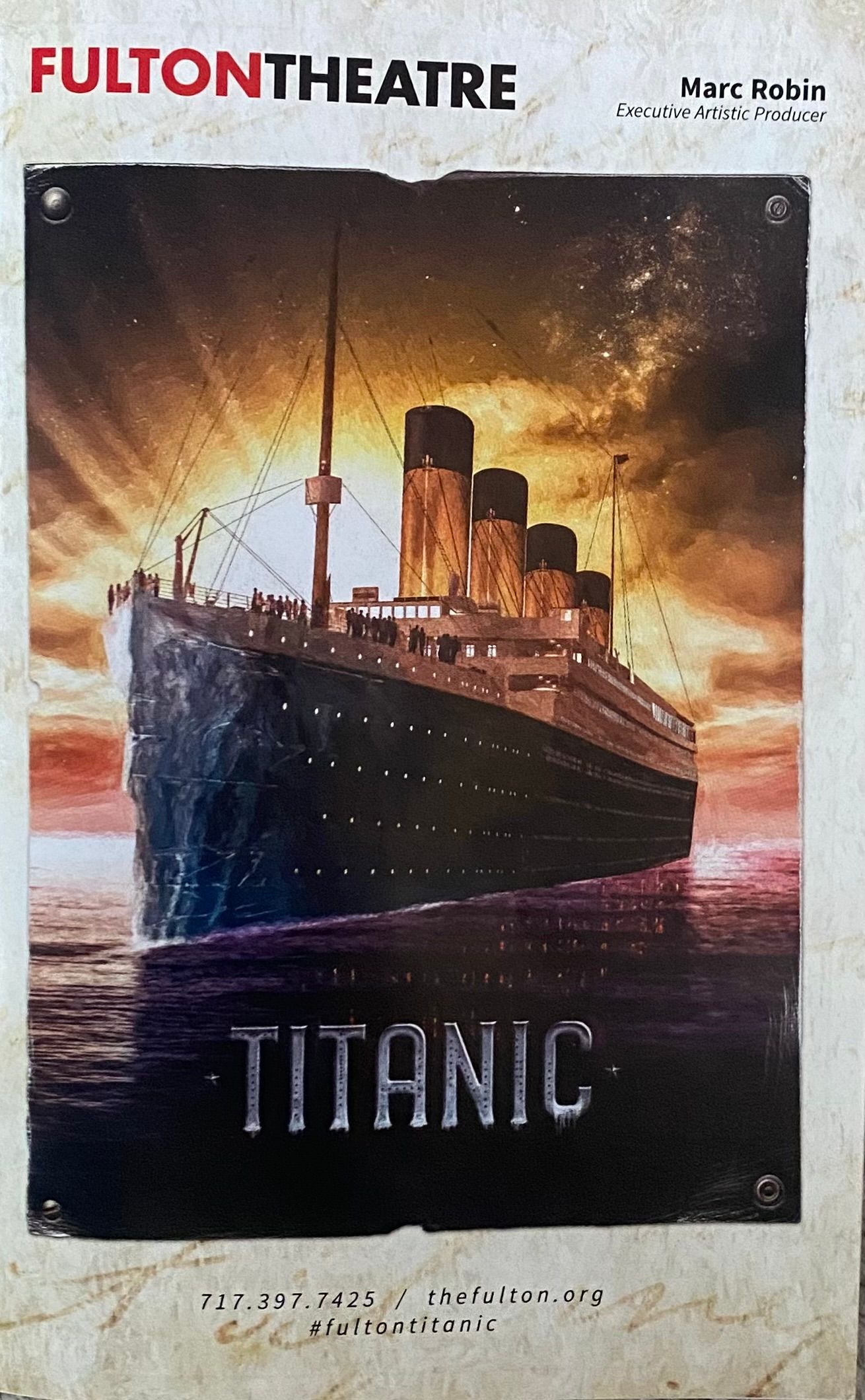




To embark on uncharted territory, The Fulton Theatre produced Titanic which was made available to audiences April 20-May 21. This musical based on the ill-fated voyage of White Star Line’s most famous ship Titanic, was written by Peter Stone with music by Maury Yeston. The musical itself was first performed on Broadway in 1997 and has had a niche fan following since then. It was a risk for the Fulton Theatre to create this musical in their venue as it did not have the room nor mechanics to work with a sinking ship on stage. However, they managed to do just that by showcasing from beginning to end the departure, doomed iceberg encounter, inevitable sinking, and the Carpathia rescue.
Marc Robin who is the Executive Artistic Producer of Fulton Theatre was also the director and choreographer for the production, Titanic. He truly (no pun intended) took on a Titanic effort in this historic retell as it is a storyline centered not only about a maritime tragedy, but also revolves around various perspectives from the ship’s passengers. There is no central character.
The musical numbers - mostly ensemble in nature - were perfectly managed by musical director, Ray Fellman. While it could be argued that Captain Edward Smith (David Girolmo) Thomas Andrews (Kevin Earley), and J. Bruce Ismay (Eric Jon Mahlum) could have had some dominance as the primary characters, they were not written to be so. Therefore, Robin and Fellman effectively directed them in various positions throughout the show to highlight their importance as a trio: the captain of the ship, the ship’s architect, and owner of White Star Line. All were vocally present in their renditions of their real-life counterparts. However, Girolmo truly gave a steely performance in Act 1’s “The Largest Floating Object in the World” as his voice carried over in its deep timbre almost foreboding in nature. If anyone is going to remember a captain of a ship, it would be Titanic’s captain.
The remaining cast consisted of 1st, 2nd, and 3rd class passengers who represented the Edwardian Era’s tier status when it came to wealth and opportunity. A majority of the ensemble that were positioned in steerage sang “A Lady’s Maid” which was headlined by the three Kates: Kate McGowan (Carolyn Anne Miller), Kate Murphy (Sarah Miramontes) and Kate Mullins (Kat Wolff). This was a cheeky homage to the common name of young female Irish immigrants. The positioning of the musicians was appropriate too. The 3rd class were known for bringing their instruments with them on board as they planned to “start over” in America. To showcase this, the pit orchestra were placed on stage so the pit could be used as an extension of the ship below deck. Therefore, the strings were able to play the lilting Irish tunes upon the stage while the performers danced alongside them. This was a clever way to make use of Fulton’s space. Another character, Barrett (Michael Nigro) also portrayed a member of Titanic’s crew as he was a stoker on the ship. Nigro’s solo performance of “Barrett’s Song” was so well received that the production had to pause due to the audience response. His voice was monumental which was a sharp contrast to his worn work clothes shoveling coal below deck.
To have such a historical and epic tragedy depicted on stage, one must have some lighter moments! This was made manifest by 2nd class couple, Alice Beane (Charis Leos) and Edgar (Blake Hammond). While the writing has Alice Beane (Charis Leos) hobnobbing with the upper class, Edgar (Blake Hammond) is embarrassed that he cannot control his wife’s impulses when it comes to socializing these elite members of society. Hammond’s comedic stance of perpetual frustration met with Leos’ witty responses caused riotous laughter for the patrons in the theatre. They were both phenomenal actors who sufficiently carried the comedic bravado needed to make the musical less depressing. Nonetheless, the ending is the ending, and it does end in complete tragedy.
The Fulton was genius in its depiction of the sinking of the ship and the many deaths of innocent lives. They did not tilt the stage and they did not try to use a huge set piece to make the ship disappear. They smartly used technology which was a wise choice. Upon the projection screen upstage you could see the ship tilting and leaning. The lighting on set gave a visual to the audience that it was moving to the depths of water, and one could say that the scenic/lighting designer Paul Black was Titanic’s MVP. It was a somber nod to the reality of what happened without being overtly macabre in nature.
Titanic the musical will always have a niche following as it did not always have an agreeable consensus from audiences due to its sensitive and historical content. However, this particular rendition was beautifully produced. The choice to focus more on the cast and less on set design gave more of a personal story to the Titanic. It remains a haunting musical and truly gives an appropriate homage to the victims and survivors of this April 14, 1912 tragedy.
Rating 5/5
- Megan Poff



